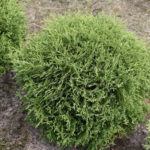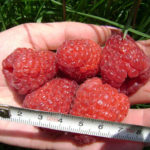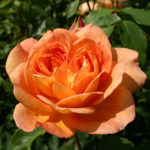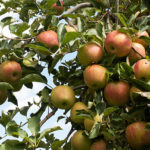Hydrangea paniculata Vanilla Fraise
Panicle hydrangeas are very popular with flower growers from all over the world. Some varieties of this beautiful plant are worth highlighting. For example, the last century gave us Vanilla freise, which today is considered one of the most popular and fashionable varieties of decorative flowering shrubs. Let's find out more about her.

History of origin
Vanille fraise is a European variety created in France. The immediate place of his appearance was the Renault nursery, which specializes in breeding varieties of precisely panicle hydrangea. Here, in addition to the aforementioned flower, such well-known varieties of this culture as Diamantino, Sunday Fraze, Diamond Rouge, Fraze Melba... The work on our heroine was carried out by a florist company from 1989 to 2003. Vanilla freise got its sonorous name thanks to the double white-pink shade of the inflorescences, and it is translated from French as “strawberry with vanilla”. Another name for the flower: Rennie.
Description of appearance and features
The varietal plant looks like a powerful spreading shrub, whose height ranges from 1.5 to 2 meters. It is formed by maroon flexible stems. Despite this peculiarity, they still bend or even lie down during the flowering of the culture due to the severity of the inflorescences. The crown width reaches 200 cm. Throughout the volume of the bush, there are ovoid leaves of a dark green color, with a serrated edge, a velvety outer surface and a pronounced pile in the vein zone, with pointed tips. Vanilla Fraze has very beautiful inflorescences: large, pyramidal, densely "stuffed" with sterile flowers. Their maximum length is 40 cm, their width is half that. The color of the flowers that have just appeared on the hydrangea is creamy white. In the future, and in a short time, it is replaced by an intense pink tint. This happens gradually, as a result of which, at some point, inflorescences with a double color flaunt on the plant: snow-white in the upper part and pink in the lower part. The pink hue acquires a more saturated tone with the onset of autumn, although it can also turn into burgundy red. Vanilla freise blooms from June to September. It begins in the year the plant is planted.
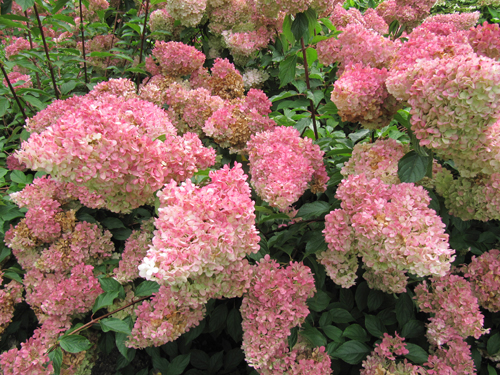
Vanille fraise is highly resistant to cold weather. She is not afraid of frosts down to -30 ° C. However, even at -40 ° C, the stems of the bush are not damaged. If they freeze slightly, then with the arrival of spring they recover very quickly. Given all this, you can safely grow a crop both in regions with a temperate climate and in the cold regions of Siberia. Hydrangea lives with normal care for up to 40 years. At the same time, the splendor of flowering does not depend in any way on the age of the plant.
Cultivation and care
Vanilla freise is a light-loving culture. However, do not place it where it will be exposed to direct sunlight for days on end. This is permissible only in the morning and in the afternoon, and at midday the culture requires partial shade. In addition, the plant does not like cold drafts. It will be protected from the winds by the nearby walls of buildings, tall trees or a fence.
Planting can be done both in spring and autumn. The variety prefers fertile, acidic soils with moderate moisture, and it is also normal for a substrate with a neutral reaction. It does not tolerate drought and stagnant moisture in the soil. Hydrangeas are contraindicated in limestone soils. The optimal composition of the soil mixture for this flower: peat, humus, leafy earth and sand in equal parts. Vanilla freise is planted in a planting pit with a depth and width of about 30 cm.A thick drainage layer (gravel, broken brick or perlite) is placed on the bottom of the hole. After planting, the plant is watered abundantly. It is imperative to leave a distance of 100 to 200 cm between the seedlings, given the impressive width that this variety grows.

The shrub is unpretentious, but nevertheless, for normal growth and development, it needs to be provided with good care. Water the hydrangea with soft lukewarm water up to twice a week. In cold and damp weather, soil moistening is performed even less often - once a week. At least 10 liters of water are poured under each bush.
Top dressing should also be regular. This procedure is carried out twice a month. The introduction of organic and mineral fertilizers under the culture is alternated. An aqueous solution of bird droppings or mullein is used as organic matter. Mineral complexes suitable for dressing Vanilla freise: superphosphate, store fertilizers intended for hydrangeas or, in the absence of such, for azaleas. You cannot fertilize the soil under the flower with ash and chalk. At the stage of budding and flowering, the plant requires more mineral fertilizers containing enough potassium and phosphorus. At the very beginning of the growing season, preference should be given to nitrogen fertilizers, which help the shrub to grow green mass in a short time.
It is very important to prune the plant. The time of its implementation is spring, the beginning of sap flow. To obtain a shrub with a large number of inflorescences, two pairs of buds should be left on it when pruning. If you want the French beauty Vanille fraise to amaze you with the large sizes of flower caps, leave the shoots longer. In addition, you need to remove dry, thin and diseased branches, faded inflorescences (to stimulate the development of new buds). An old Vanilla Freise bush can be updated using this procedure by cutting it to the base.
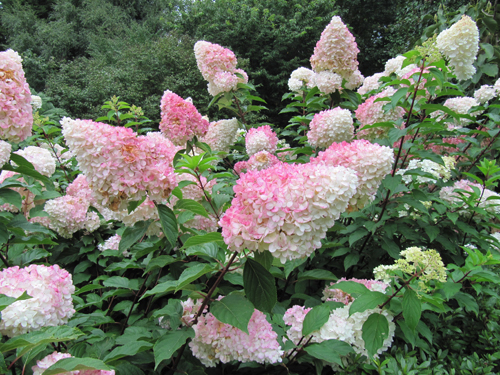
Young specimens planted on the site in the warm season should be covered for the winter, despite the high cold resistance of the hydrangea. Fallen leaves, sawdust, and straw will be good insulators. And it is recommended to lay a layer of compost around the trunk so that the roots of the plant do not freeze.
Vanilla freise is susceptible to fungal diseases. First of all, we are talking about powdery mildew, the appearance of which is provoked by high air humidity. Gray rot causes no less harm to the plant. These troubles are fought by treating hydrangeas with an aqueous solution of a fungicide. If the leaves turn pale on the shrub, it means that it has become a victim of chlorosis, which can be eliminated by acidifying the soil. Of the pests, the greatest danger for the European fashionista is the gluttonous aphid. They get rid of it thanks to insecticides.
Plant propagation occurs in two ways: by layering and by dividing the bush. The first method is used in spring and autumn, but only for mature shrubs with a developed root system. The second method can be used throughout the growing season. Even beginner growers can handle it.
Use cases
Variety Vanilla freise is appropriate in group plantings, where it goes well with flowering perennials, conifers or other ornamental shrubs. This culture is also good in garden ensembles with other varieties of panicle hydrangea. This attractive plant is suitable for hedges and mixborders where it is best placed in the middle tier. Cuffs, hosts and sedum will make a wonderful company to the bush. You can plant Vanille fraise in the center of your flower bed and surround it with shorter plants. As a solitary bush, this beauty is eye-catching in front gardens, parks, patios and recreation areas.
